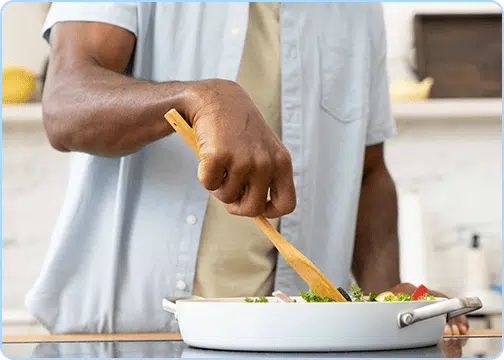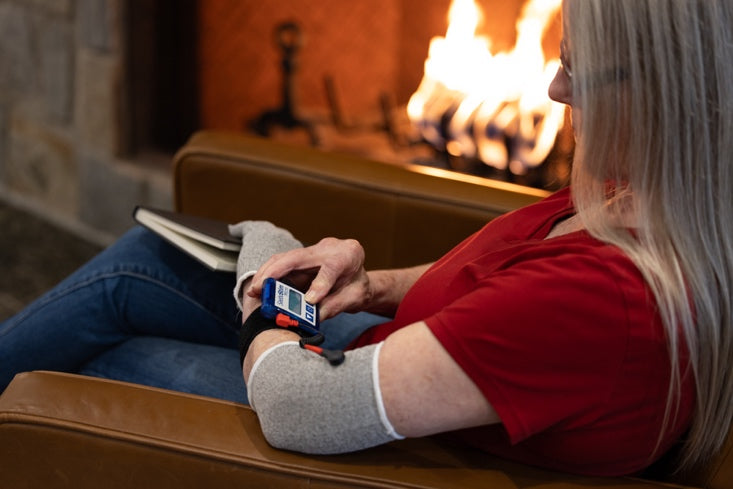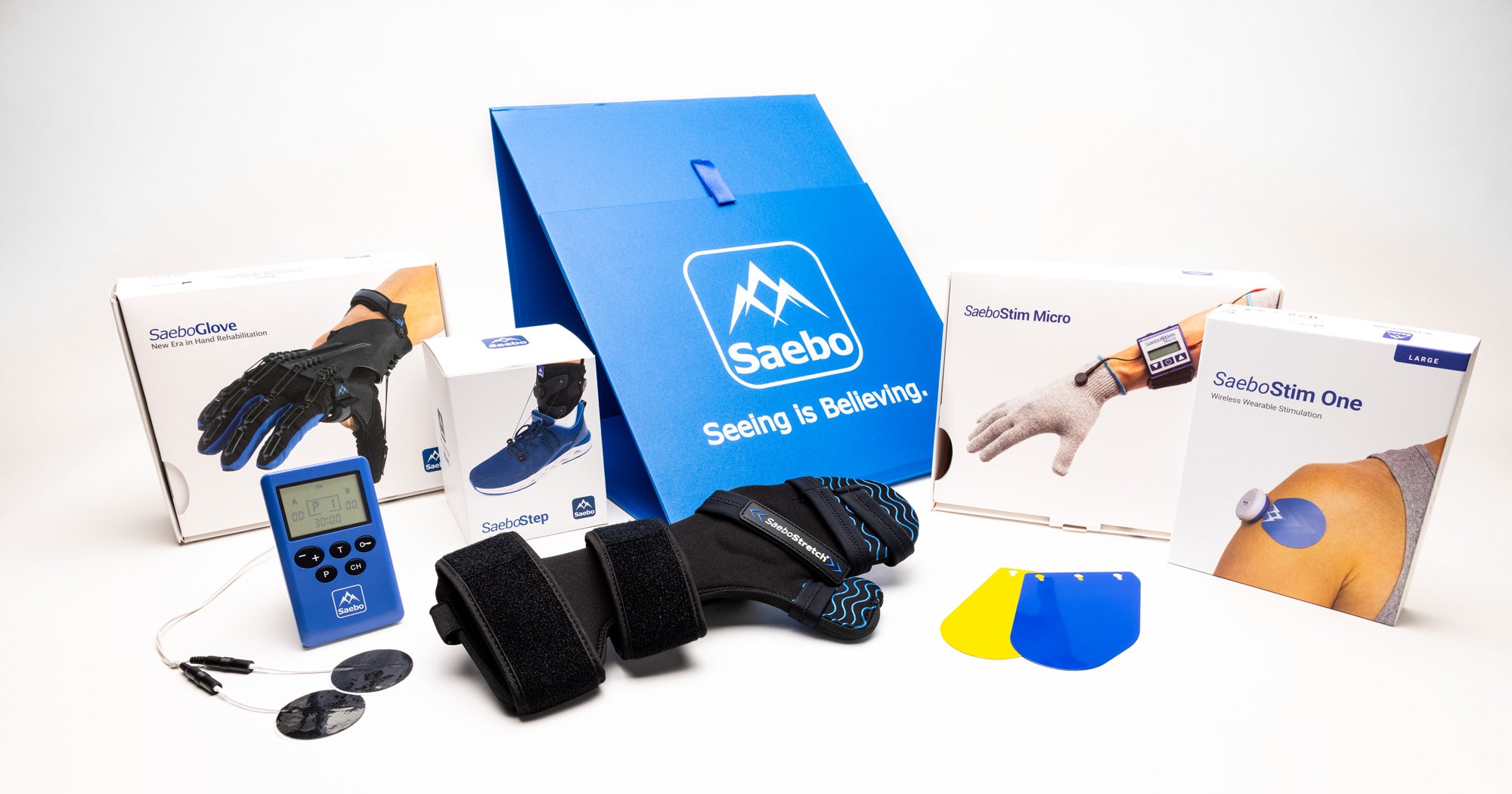Neuroplasticity Explained: The Science of Brain Recovery After Stroke

Our brains are incredible machines, made up of 100 trillion neural connections that constantly send and receive information. While stroke remains the second-leading cause of death worldwide and can contribute to motor, cognitive, and speech difficulties, the brain’s natural ability to reorganize and rewire itself—a phenomenon known as neuroplasticity—offers real hope for recovery. In this guide, we’ll explore how your brain can heal, adapt, and regain function after stroke, and what types of therapies and tools can support that journey.
Stroke recovery presents both challenges and opportunities for patients. About one in four stroke survivors regain independence in their daily activities, while another one in four may require long-term care in a nursing facility. Understanding these outcomes highlights the importance of early intervention, rehabilitation, and supportive therapies to maximize recovery potential. Research now confirms that brain plasticity continues throughout life and supports recovery from injury or disease [1]. The first six months after a stroke are significant because survivors see the fastest improvements during this time [2].
Understanding the Brain’s Ability to Heal Itself
The brain knows how to adapt and reorganize after injury—a phenomenon known as neuroplasticity or brain plasticity. This remarkable process serves as the foundation of recovery after stroke and other neurological injuries.
What is neuroplasticity?
Neuroplasticity describes the brain's lifelong capacity to create new neural pathways and modify existing ones. Your brain works like a GPS system—it creates detours around damaged areas when the usual route gets blocked. Healthy brain regions can take over functions from injured areas because of this flexibility.
Modern neuroscience confirms that our brains stay malleable throughout life, contrary to older beliefs about the adult brain being fixed and unchangeable [3]. This natural ability to change provides the biological basis that supports recovery and rehab after brain injury.
What happens to the brain after a stroke?
A stroke interrupts blood flow to part of the brain through blockage (ischemic stroke) or bleeding (hemorrhagic stroke). Brain cells can start dying within minutes without oxygen and nutrients, which creates an area of damage called an infarct.
Different brain regions, when affected by a stroke, produce distinct symptoms. For example:
- Frontal lobe – primary motor cortex: Motor and mobility challenges due to weakness or paralysis on the opposite side of the body.
- Frontal lobe – Broca’s area: Difficulty producing speech (expressive aphasia).
- Temporal lobe – Wernicke’s area: Difficulty understanding language and communication (receptive aphasia).
- Parietal lobe: Numbness, sensory deficits, trouble with spatial awareness, or neglect of one side of the body.
- Occipital lobe – visual cortex: Partial loss of vision or difficulty processing visual information.
- Cerebellum: Impaired coordination, balance problems, ataxia or dizziness.
Inflammation and swelling create temporary dysfunction beyond the permanently damaged area right after a stroke. Some function may naturally return over time—this is often referred to as spontaneous recovery.
How does neuroplasticity help in brain recovery?
Several mechanisms allow neuroplasticity to drive recovery. Surviving neurons near damaged areas can sprout new connections (axonal sprouting). Undamaged brain regions can also take over functions from damaged areas (cortical remapping) [4].
For example, a stroke patient's right arm movement can improve when rehabilitation taps into brain plasticity through repeated practice. This stimulation encourages healthy brain regions to build new neural pathways that control that arm. Stroke recovery devices like the SaeboGlove and SaeboFlex boost this process by enabling repetitive, targeted movements needed to rewire neural circuits, ultimately enhancing functional recovery and helping the patient regain independence.
The brain needs active participation to heal. Each therapy session teaches your brain to create new pathways, making rehabilitation the key that taps into your brain's natural healing potential.
The Science Behind Brain Rewiring
Neuroplasticity meaning and biological basis
Neuroplasticity refers to the brain's ability to change and adapt throughout life. These changes involve synaptic connections between neurons—some become stronger while others weaken based on activity and experience. Brain plasticity operates through activity-dependent gene expression: neurons that fire together release growth factors, which trigger gene transcription and support the formation of new synaptic connections [5]. This biological remapping becomes particularly important when the brain is recovering from injury, allowing healthy regions to compensate for damaged areas.
Cortical reorganization and functional remapping
The brain starts reorganizing its connections after a stroke destroys or alters neural networks. This process responds strongly to what happens after the injury, including the effectiveness and frequency of targeted and intentional use of the affected limbs.
Remapping is especially exciting for stroke rehab because it allows healthy brain regions to take over functions that were once controlled by damaged areas. Using advanced imaging tools like functional MRI and transcranial magnetic stimulation, researchers can actually see this rewiring in action. For instance, when a stroke affects the hand region of the primary motor cortex, targeted exercises help preserve the hand’s functional representation. Over time, these exercises can help train undamaged areas of the brain to regain control of hand movements, often resulting in measurable improvements in motor function.
Stroke recovery timeline and brain plasticity
People once thought neuroplasticity only worked 3-6 months after stroke. While the earlier phases do indicate the most brain activity, we are learning that neural changes can be a lifelong event.
Recovery timeline after stroke for neuroplastic changes:
- Acute phase (first 48 hours): Some improvements in this phase come from reduced swelling, improved blood flow, and early spontaneous brain reorganization.
- Subacute phase (weeks to months): Considered the “critical window” for heightened neural connections. Rehabilitation during this period can lead to especially strong gains
- Chronic phase (months to years): Recovery continues but at a slower rate. The ability for brain rewiring doesn’t “switch off” — it just becomes less pronounced.
As noted above, neuroplastic changes are the most prevalent in the first several months
following a neurological injury. Despite this critical window, with intentional intervention
strategies functional improvements can be lifelong.
Proven Therapies That Activate Neuroplasticity
Your brain's natural healing power works through targeted interventions in rehabilitation. Let's get into evidence-based approaches that activate neuroplasticity after stroke.
How to rewire the brain after stroke
The success of functional recovery depends on intensity and repetition. Research shows that doing an hour of daily therapy improves body function and activity levels after a neurologic injury [6]. This high-intensity practice teaches your brain to create new neural pathways. Studies prove that combining physical training with other treatments leads to better outcomes by boosting brain plasticity.
Hand therapy after stroke: SaeboGlove and SaeboFlex
Stroke rehab devices like the SaeboGlove and SaeboFlex are tools designed to support hand recovery after stroke or brain injury.
- The Glove uses a tensioner system, similar to elastic bands, to assist with hand opening. This can make it easier to practice functional tasks and encourage repetitive movements that support muscle strength and coordination.
- The Flex is often used when spasticity is present. It aids with grasp and release exercises, allowing patients to engage the affected hand in training.
Both devices are based on the principle that regular, task-specific practice with the affected hand can help maintain mobility and promote recovery. By providing additional support with some of the most difficult hand motions, they enable patients to sustain repetitive tasks further strengthening new pathways for motor control.
Constraint-induced movement therapy (CIMT)
CIMT restrains your unaffected limb while you practice intensively with your affected limb. This therapy improves motor function, arm-hand activities, and daily life functions [7]. Your brain creates structural changes when you're forced to use the affected limb, which prevents "learned non-use" and increases gray matter in sensory and motor regions.
Electrical stimulation (e-stim)
E-stim devices like NMES or FES deliver mild electrical currents to the muscles in the affected limb, causing them to contract. This helps patients practice movements even when voluntary control is limited. By pairing stroke rehab technology with intentional movement or task practice, E-stim reinforces the connection between the brain and muscles, strengthening neural pathways involved in motor control. Research shows that combining NMES with active therapy can enhance motor recovery, reduce spasticity, and promote neuroplasticity after stroke.
When a patient intentionally tries to move a limb, their brain sends motor signals, even if the movement is weak or incomplete. If NMES is applied at the same time, it activates the target muscle, producing the intended movement. This pairing of brain intent + muscle contraction provides strong sensory feedback back to the brain, which helps "close the loop" and reinforce the neural connection. Learn more about E-stim here.
Using stroke recovery devices at home
Home-based rehabilitation technologies allow people to practice exercises more often and with greater flexibility. Stroke rehabilitation technology such as the SaeboStim Pro or SaeboStim One E-stim devices can support movement in weak or paralyzed muscles, making it easier to complete repetitions. Furthermore, connecting repetitive practice, with or without supportive devices like E-stim, to functional daily tasks increases the benefits. Consistent daily practice at home encourages brain remapping and can support ongoing functional recovery after stroke.
Tracking and Enhancing Your Recovery Journey
Monitoring progress plays a key role in stroke recovery that works. Technology now gives us powerful tools to see how the brain heals.
How to increase neuroplasticity after stroke
Neuroplasticity is driven by specific, purposeful stimulation. Repetitive and meaningful skill-based tasks tend to create stronger neural changes than passive movements alone and are great for motor recovery after stroke. Aerobic exercise can further enhance this process by increasing levels of brain-derived neurotrophic factor (BDNF), a protein that supports neuron survival, growth, and stronger synaptic connections [8]. Techniques such as mental practice, action observation, and dual-task training also encourage the brain to rewire. Importantly, neuroplasticity continues throughout life, meaning there is always potential for improvement.
Creating a personalized stroke recovery plan
Each stroke survivor benefits from an individualized rehabilitation plan. Advanced assessment tools can help identify a person’s specific recovery potential. The optimal plan considers factors such as stroke type, the brain regions affected, and personal goals. Effective treatments and protocols for stroke recovery at home align not only with the patient’s neurological profile but also with their motivations, preferences, and home support system, ensuring a plan that is both realistic and meaningful.
Combining therapies for better outcomes
Research shows that combining different rehabilitation approaches can enhance recovery. Some studies have explored techniques such as botulinum toxin injections, transcranial direct current stimulation (tDCS), and vagus nerve stimulation alongside conventional therapy. These approaches are being investigated for their potential to support hand function and promote neuroplasticity, though they are not standard treatments for every patient. The most consistently supported strategies remain repetitive, task-specific practice and intensive, individualized therapy.
Conclusion
Neuroplasticity transforms our understanding of stroke recovery. Your brain's natural power to rewire itself brings real hope to survivors. The brain contains 100 trillion neural connections that provide the biological foundation to heal after injury.
Stroke recovery brings tough challenges, but neuroplasticity continues throughout life and is a powerful tool in functional recovery following a stoke. You can improve months and years after the original event, and while the first six months marks a critical period, research indicates that functional improvements can continue to be made years after injury.
Evidence-based therapies activate these natural healing mechanisms effectively. Constraint-induced movement therapy, use of NMES, and aerobic exercise trigger specific neuroplastic changes. Assistive devices for finger extension boost this process by enabling repetitive, functional movements that rewire neural pathways for hand function.
Different therapies combined work better than single approaches. Rehabilitation devices paired with stimulation techniques speed up recovery through increased neuroplasticity. A healthy diet and regular exercise create the perfect environment for brain healing by increasing important proteins like BDNF.
At Saebo, we believe knowledge strengthens recovery. Understanding brain healing gives you tools to take charge of your recovery. The road ahead might seem challenging, but neuroplasticity science offers real hope. Your brain wants to heal—and with the right approach, remarkable recovery stays within reach.
References
- https://pubmed.ncbi.nlm.nih.gov/40280532/
- https://www.hopkinsmedicine.org/health/conditions-and-diseases/stroke/stroke-recovery-timeline
- https://pmc.ncbi.nlm.nih.gov/articles/PMC10741468/
- https://pmc.ncbi.nlm.nih.gov/articles/PMC49803030/
- https://pmc.ncbi.nlm.nih.gov/articles/PMC3134580/
- https://pmc.ncbi.nlm.nih.gov/articles/PMC6481475/
- https://pmc.ncbi.nlm.nih.gov/articles/PMC11621666/
- https://pmc.ncbi.nlm.nih.gov/articles/PMC10932589/
Todo el contenido de este blog es únicamente informativo y no sustituye el consejo, diagnóstico ni tratamiento médico profesional. Consulte siempre con su médico u otro profesional de la salud cualificado si tiene alguna pregunta sobre una afección médica. Si cree que puede tener una emergencia médica, llame a su médico o al 911 de inmediato. Confiar en la información proporcionada por el sitio web de Saebo es bajo su propio riesgo.



